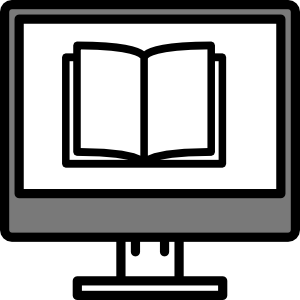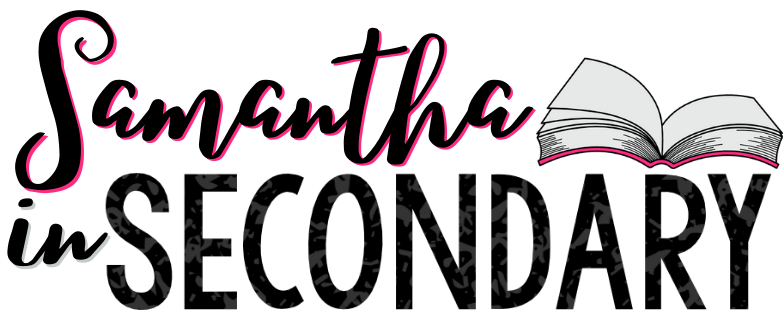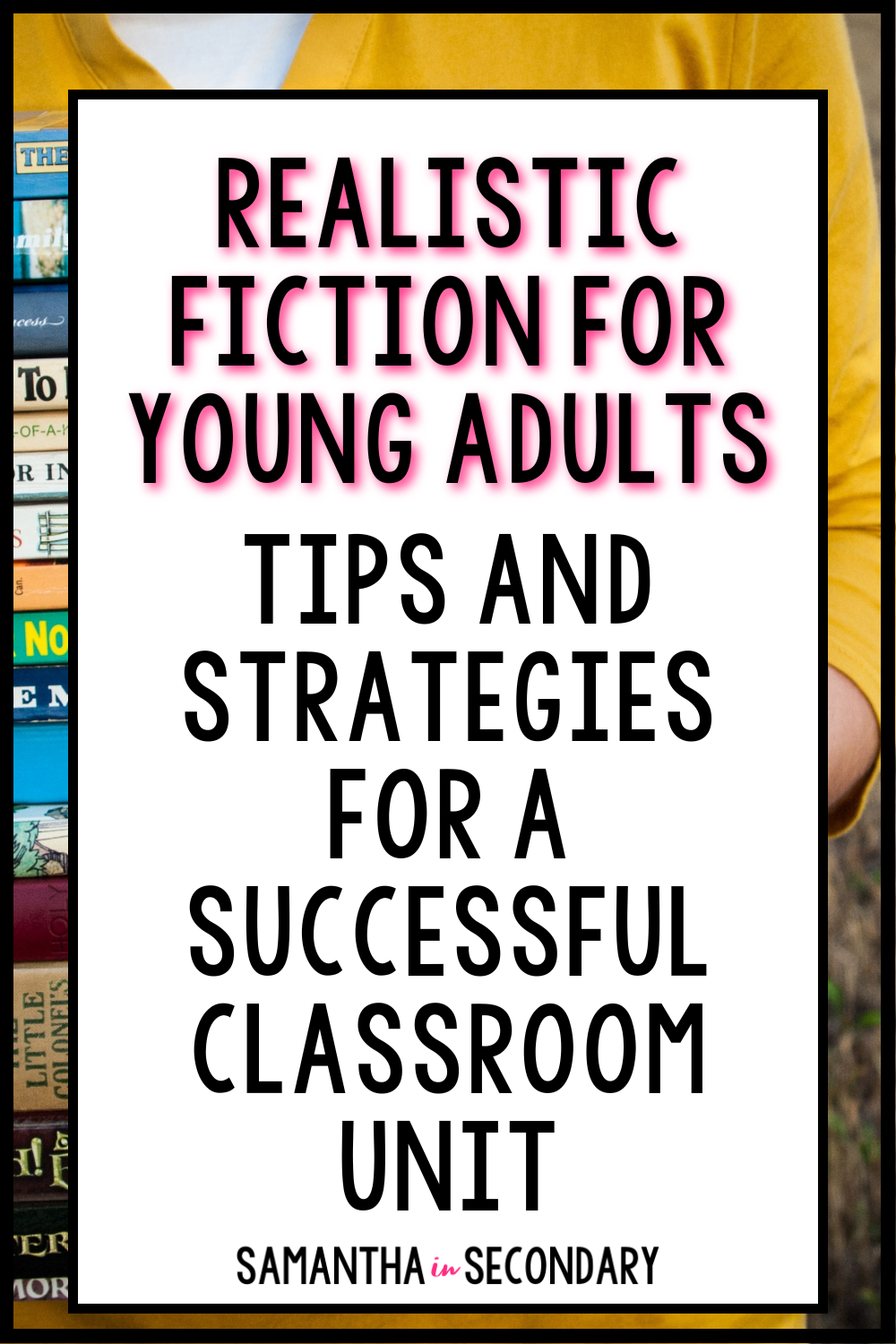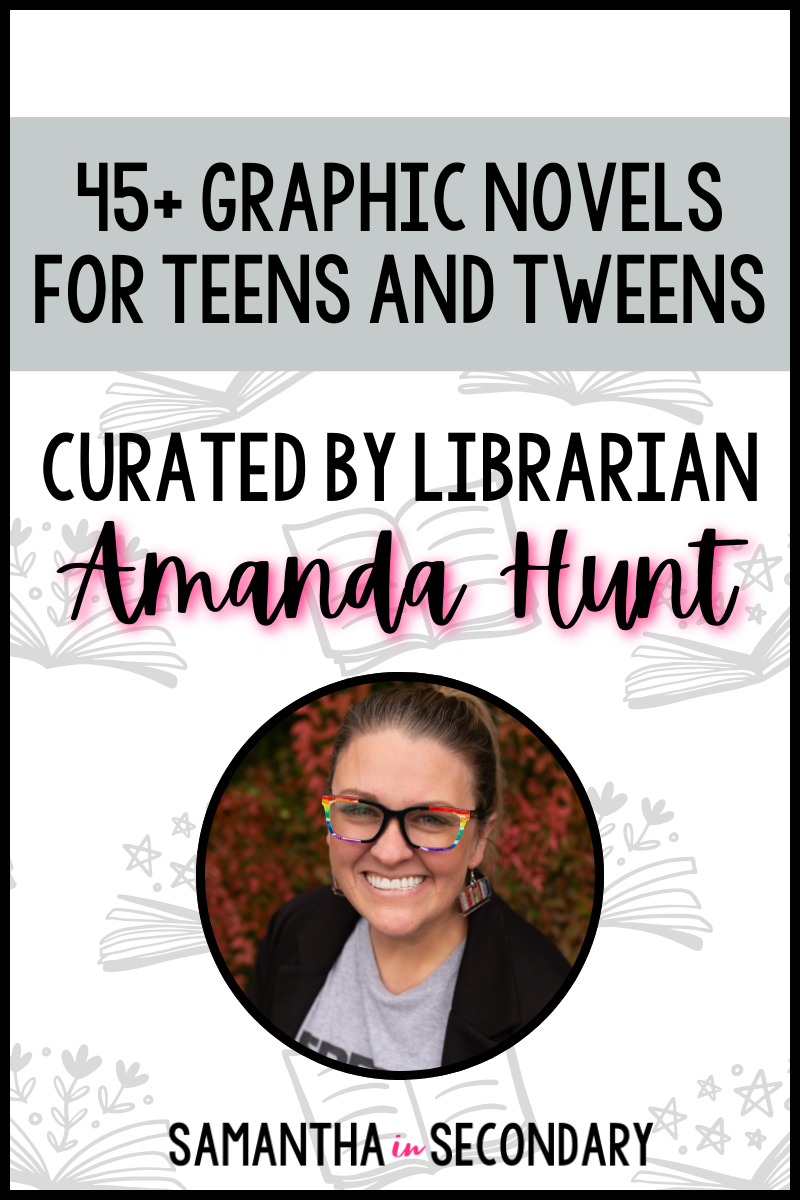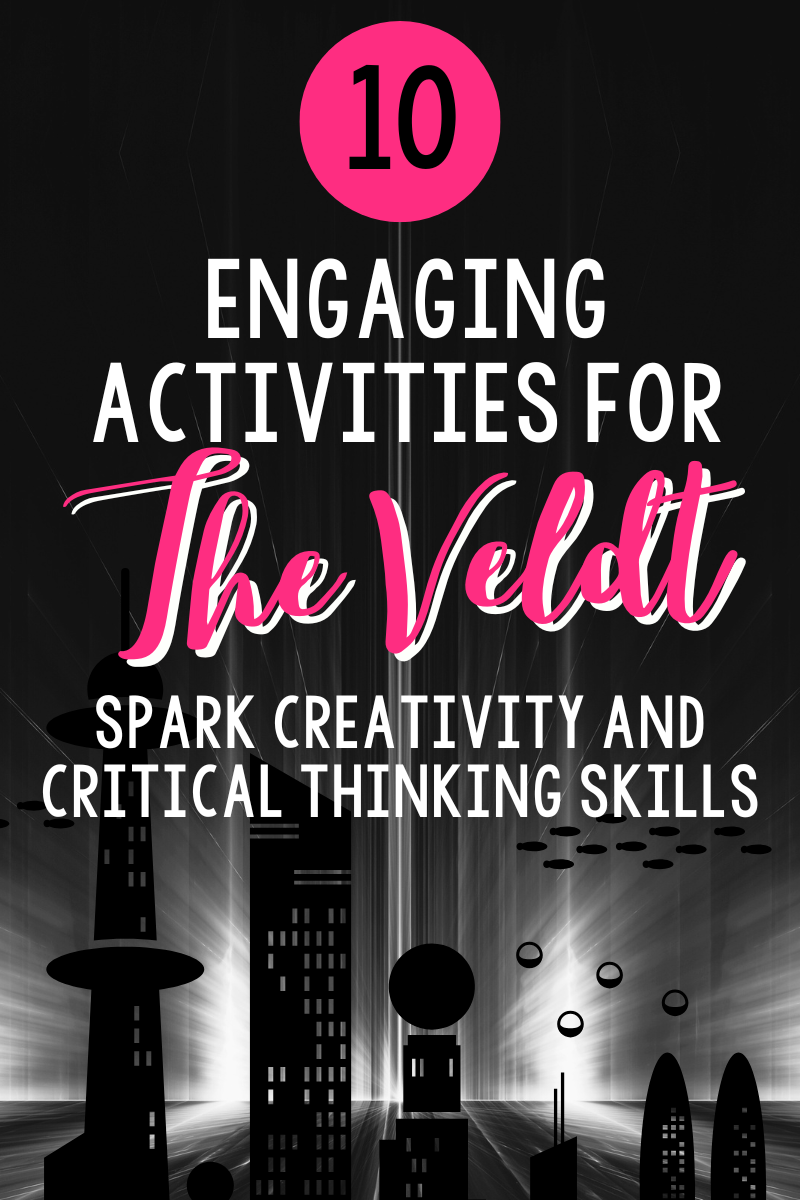Do you ever find yourself overwhelmed when planning an independent reading unit for your secondary ELA classroom? You’re not alone! Between choosing the right books, creating meaningful assignments, and keeping everything organized, it’s easy to feel like things can spiral.
But here’s the good news—you don’t have to figure it all out on your own! I’ve gathered some of the best practices for structuring independent reading units, along with tips to make your process smoother and more effective. Whether you’re trying to foster student choice, track progress, or build engaging discussions, I’ve got you covered with links to helpful resources, activity ideas, and time-saving organization strategies.
Ready to put a strong structure in place for your next independent reading unit? Let’s make this your most successful independent reading unit yet.
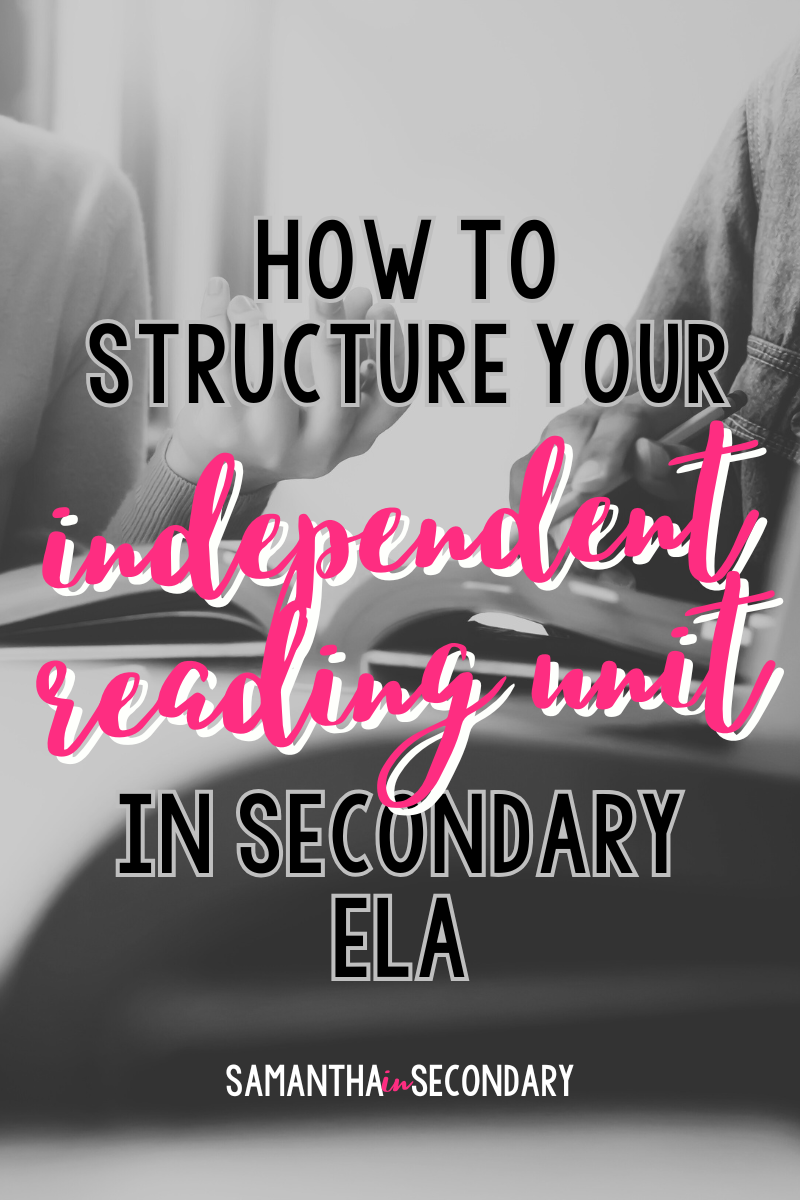
Before Reading Activities for Your Independent Reading Unit
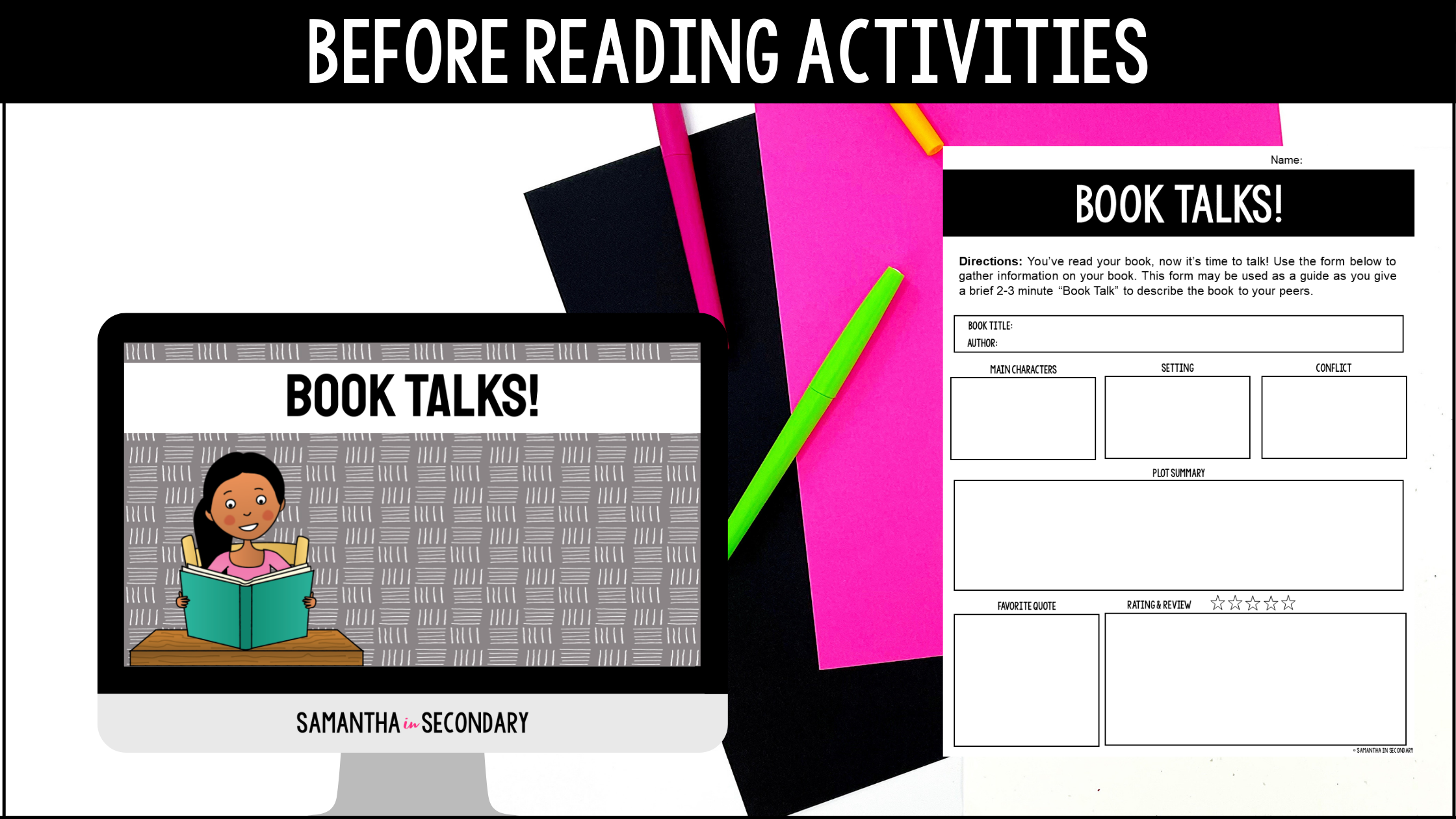
One of the best parts of teaching independent reading is the joy of discovering amazing books and sharing that excitement with my students. There’s nothing quite like seeing their eyes light up when they find the book that speaks to them.
Having taught an entire course centered around independent reading, I’ve developed a ton of creative ways to launch new independent reading units. I’ve learned that the way you introduce your unit can set the tone for engagement, choice, and a culture of reading that feels both personal and powerful.
Here are a few tips to get started before students even crack open a book.
Make sure you get a parent letter!
If you’ve been avoiding independent reading units because you fear the content of the books offered, I have news for you. You don’t have to read everything or make that decision yourself. Parents and guardians should absolutely be involved with their students. The trick is to teach parents how to do so. Educate them on how to look up books through resources such as Goodreads and Common Sense Media, and provide a parent letter to allow them to decide what is appropriate based on their personal situation.
Book Talks
Book talks are exactly what they sound like—sharing your favorite books and explaining why someone else should read them. The key is to provide just enough information to pique interest without giving too much away. Start by modeling a few book talks yourself, highlighting the title, author, genre, and a brief summary before diving into your “sell”—what makes the book stand out and why it’s worth reading. Be enthusiastic and authentic—your excitement is contagious! Once your students see how it’s done, invite them to try their own book talks, focusing on what they personally loved about their chosen reads. This strategy not only encourages reading, but it also builds confidence and sharpens their presentation skills. Need a template? You can find my done-for-you resource here.
Speed Dating
This activity is a fantastic way to kick off an independent reading unit and build excitement around book choices. Students rotate through tables where they “speed date” with books by examining the covers, reading the blurbs, and skimming the first few pages to get a feel for each one. After sampling several books, they complete an exit ticket (like this one) to reflect on their favorites and decide what they’d like to read. You can include prompts that ask students to rank their top choices or explain what drew them to a particular book. Adding a timer and some light music can create a fun, energetic atmosphere that makes the process even more engaging. By the end, your students will have a clear idea of which books resonate with them—and they’ll be excited to dive in.
Book Tasting
Another unique activity is a book tasting, very similar to the speed dating, but I go all out with menus, tablecloths, and treats. You can group books by genre, themes, or novels to help students select what they will “savor” at the book tasting.
Reading Sprints
Reading sprints are a great way to help students stay on track and finish their books around the same time. Start by setting a timer—typically 10-15 minutes—and have students read silently during that time. When the timer goes off, they log how many pages they’ve read and use that number to estimate their daily reading pace. For example, if a student reads 8 pages in 10 minutes and the book is 240 pages long, they’ll need 30 sessions to finish. Compare this to the number of in-class reading days you’ve scheduled and show students how to track any additional reading they need to complete at home. Bookmark checklists or reading logs can be helpful for this! Reading sprints also improve classroom management by creating a structured, focused routine. If students finish early, provide extension activities like reflection questions, journaling, or discussion guide prep to keep them engaged and accountable. I go over this process in depth in this podcast episode if you want to hear more.
During Reading Activities for Your Independent Reading Unit
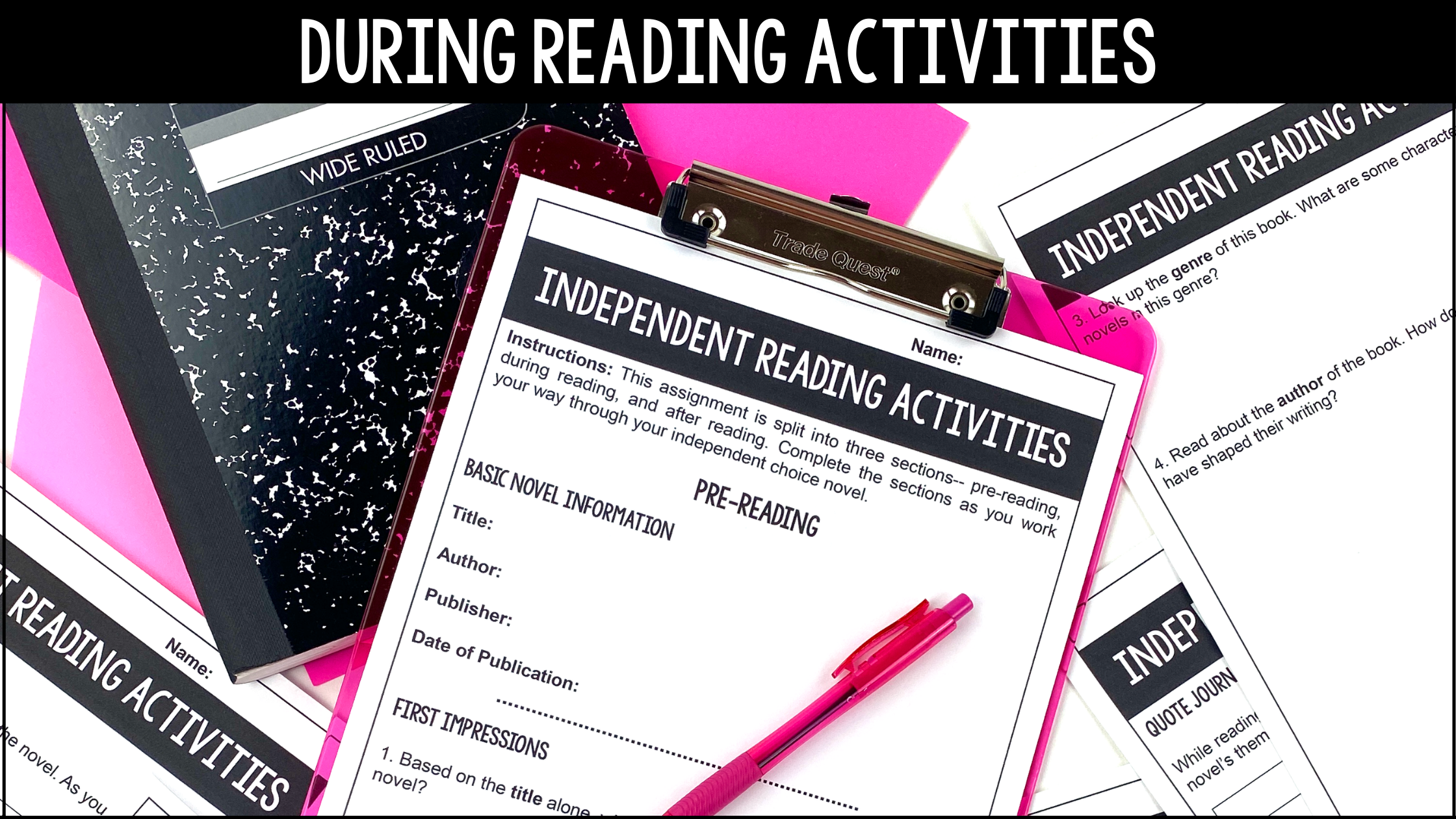
These activities are my go-to bread and butter for choice reading. There can be some trial and error with your own particular students, but one thing I’ve learned is that providing choice can go a long way. Maybe try giving students a few activities to decide between during the unit. That way they can decide what best suits them.
Doodle Notes
Literary element doodle notes allow students to take notes on the most important parts of the story while reading. It’s a good way to keep students on track without distracting them too much. You can click here to check out my pre-made doodle notes I use.
Response to Literature Activities
I quit reading quizzes a long time ago. Instead, I use response to literature activities. These kinds of activities include assignments that allow students to think critically about what they’ve read. They activate prior knowledge, give students an active role in their reading, and allow for a unique assessment that will let you know what your students have learned in a creative way.
Character Analysis
These kinds of activities are especially effective activities for independent reading units. If students can tell you specifics about a character then they are most likely actually reading their books. Use a character mini-lesson and incorporate fun projects like soundtracks to tell if students understand the material. I’ve got a whole bundle of ideas here.
Nonfiction Text Connection
Having students find a nonfiction text connection to any book and then research articles is one of my favorite ways for students to make text-to-text connections. All books inevitably connect to the world in some way and encouraging your students to find those connections will help them make deeper connections within the text.
Book Blogs
These are really fun for students to react to what they’re reading. At regular intervals during the reading process, have students stop and write about what they read. You can have them respond to a specific prompt or free write, share with each other or the whole class. This is also a great way to include an authentic audience for their writing.
After Reading Activities for Your Independent Reading Unit
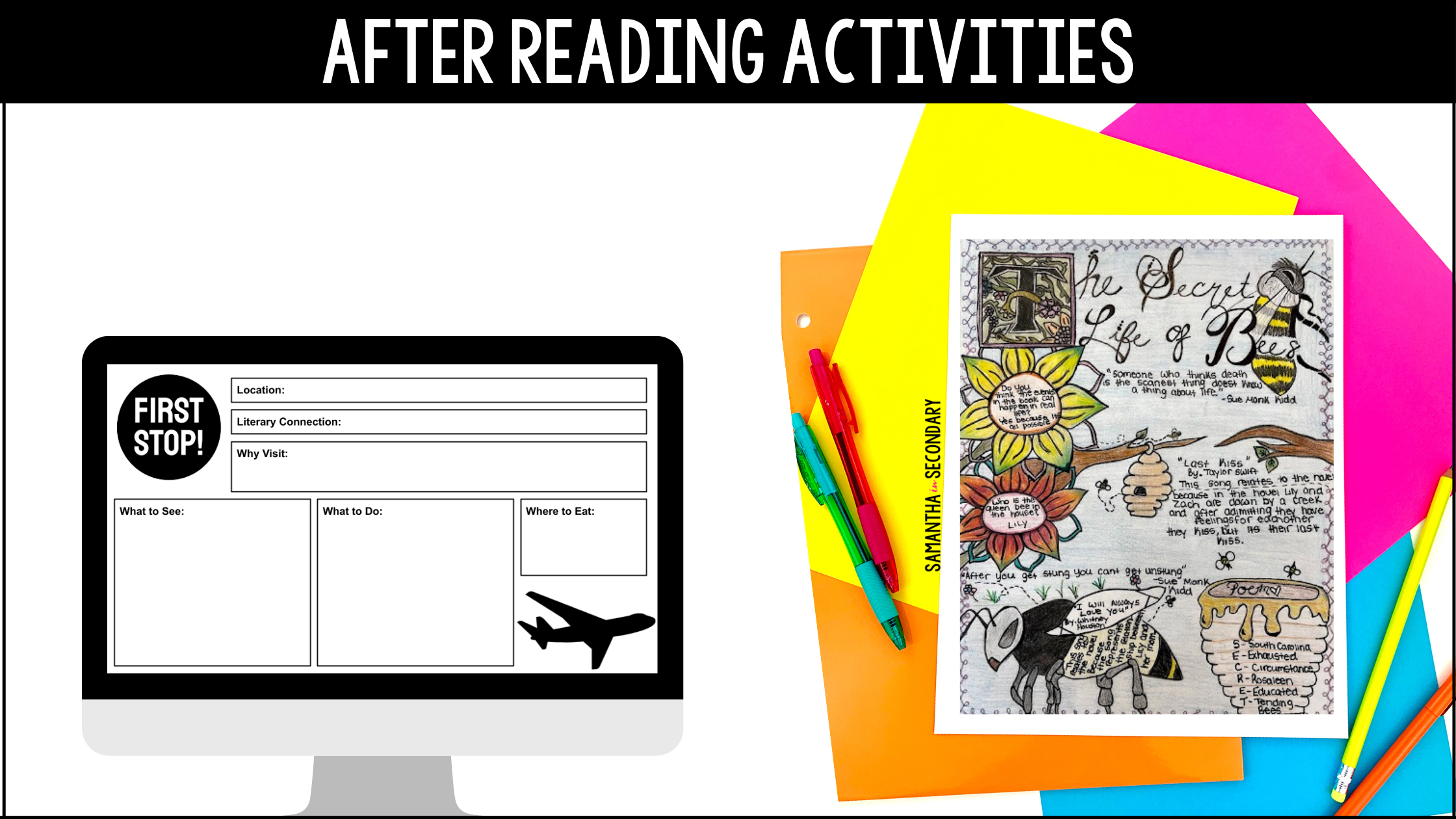
A robust independent reading program has always been a cornerstone of my classroom, fostering choice, engagement, and a lifelong love of reading. However, one of the biggest challenges has always been finding unique and meaningful ways to assess whether students have truly read and understood their chosen books. Traditional book reports can feel stale, but with a little creativity, independent reading assessments can become exciting opportunities for students to showcase their learning.
Allowing students to have a say in what they read is a powerful motivator—but giving them options in how they demonstrate their understanding can be just as effective. When students can choose from a variety of post-reading projects, they’re more likely to take ownership of their work and connect more deeply to the text.
Here’s a list of my favorite independent reading projects and activities that balance creativity, rigor, and student voice:
One-Pagers
These are popular for an independent reading unit because they allow students to be creative and no two are alike. This makes it hard for students to fabricate their knowledge because most of the activities require students to analyze what they have read. This might include theme songs for characters or illustrating a scene from the novel.
Book Flat Lays
One of my more recent favorite independent reading unit assessments has been flat lays. You’ve probably seen these on social media and I thought they were so clever that I decided to use them in my classroom. This type of reading project requires students to think critically about elements in the novel and stage a photo of the book with props that show different aspects of the book. Want more information on book flat lays? Read my full blog post here.
Literary Field Trip
A favorite idea for an independent reading unit is to have students create a literary field trip. This works especially well if your students are reading historical fiction or books that are based on a real place. The gist of the project is that students research various places from a text. Want to learn more? Click here to read my full blog post.
Literary Quote Books
This quote book can be a really flexible project for all types of learners. I thought one day, “What if we have students choose the most meaningful quotes from any novel they’ve read and curate a book out of them and explain how they connect to the theme?” This was the basis for the idea, but it took off from there. Students with digital creativity can use a program like Canva to design quotes, or create a social media carousel. Students have wanted to create and stage photos of the quotes, or make them on large pieces of paper. Limitless ideas and the rigor is there no matter how the information is presented.
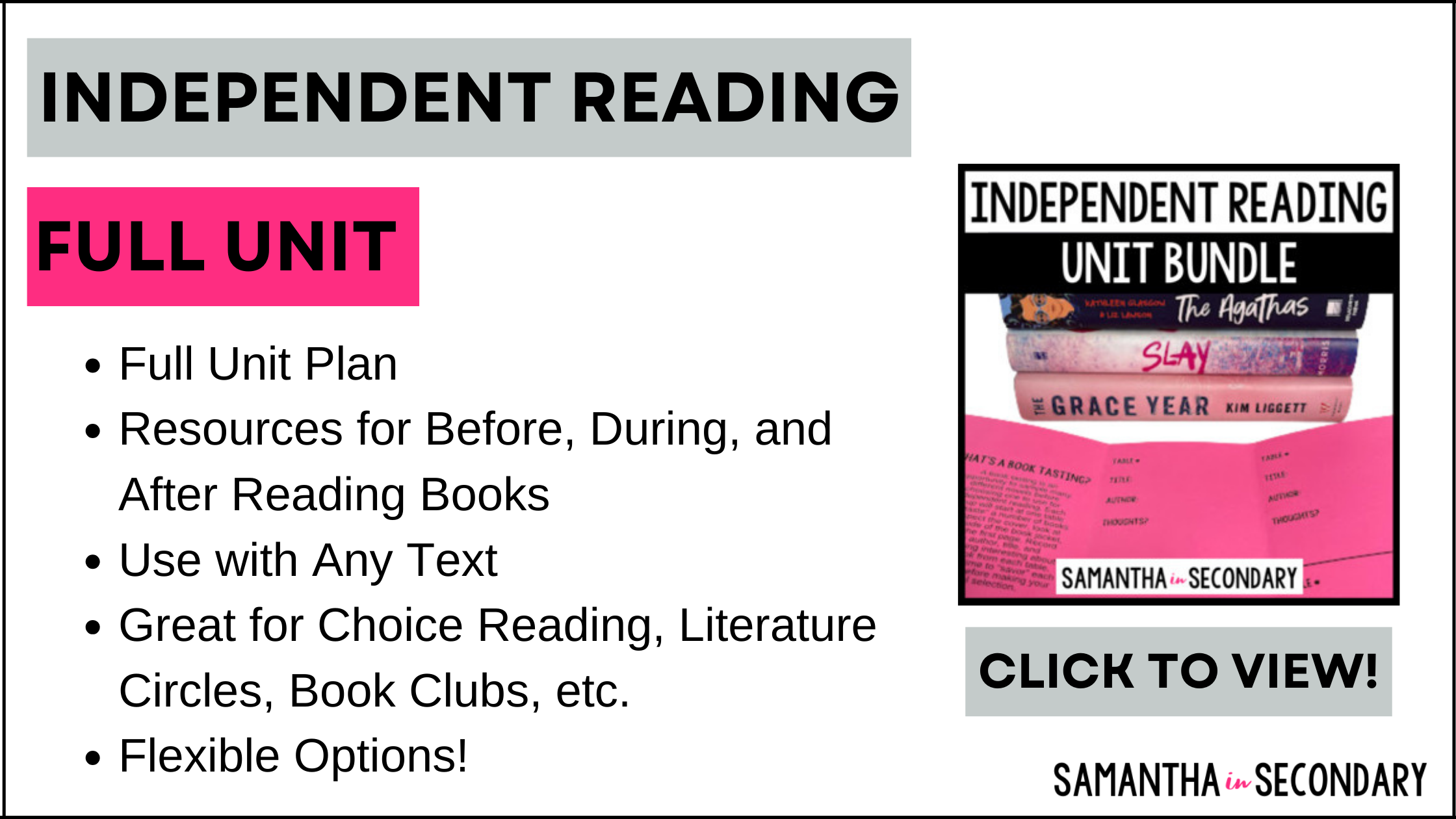
Looking for the best books to add to your independent reading unit, class library, or your own bedside table? You can find my teacher-curated, student-approved list of 100 YA novels to add to your classroom here.
Planning an independent reading unit can feel overwhelming, but with the right structure and resources in place, it can become one of the most rewarding parts of your ELA classroom. By incorporating engaging activities before, during, and after reading, you’ll create a supportive framework that fosters choice, accountability, and creativity. Hopefully, these ideas help take some of the stress out of your planning process and inspire new ways to connect with your students through reading.
Do you have a favorite strategy or go-to resource that works wonders in your independent reading unit? I’d love to hear your suggestions! Whether it’s a unique assessment project, a favorite read-aloud, or a way to build excitement around student choice, your insights could spark ideas for other educators. Let’s keep the conversation going. Comment below or send me a message on Instagram.
Happy teaching!



